The Beaker People were so named because of their distinctive pottery (they were shaped like inverted bells and highly decorated). These pots were included in their burials and can be found all across Europe in the late third and early second millennia BC. The Beaker People migrated to Britain around 4,500 years ago spreading right to the north coast of Scotland. This was before the Celts, Gaels and Romans, a time we know so little about. Most Classical authors say the Celts came in the Iron Age migration 2,000 years later, but this has been heavily questioned, many believe it was the early Beaker people who brought the Celto-Italic languages.
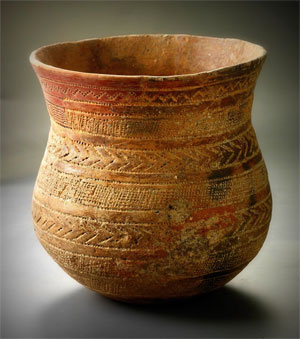
These early people buried their dead with a beaker full of liquid to ease the journey to the next life (well this is one theory). There is evidence of beer and mead within some of these jars. Exactly why they used beakers is not fully understood.
The style of graves was also similar – all being round barrow graves. Unlike the Neolithic settlers, they buried their dead in individual graves, a practice which has remained ever since. This shift to individual burials shows a change in beliefs and social systems. Individual graves had personal belongings added – this was also new. Men and Women were mostly treated the same, interestingly the only difference was that men were buried tending to face the East, and women facing West. So one had sun rise and the other sun set.
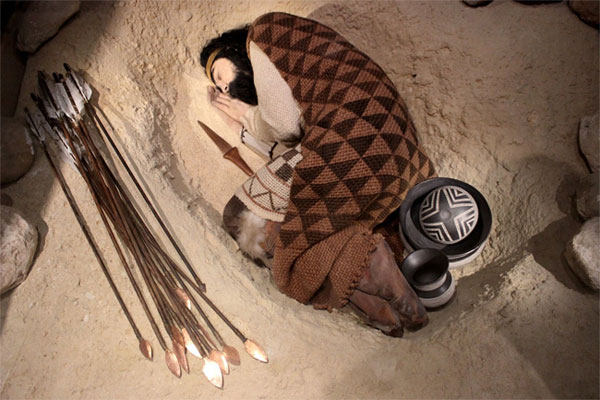
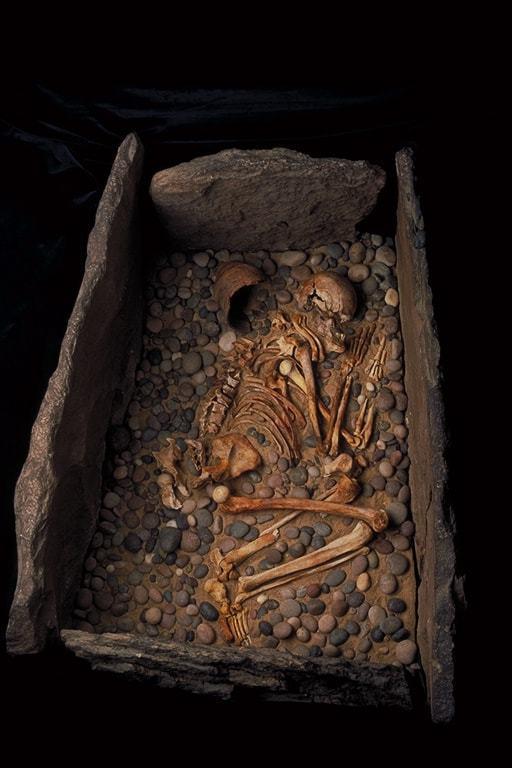
Pottery was only one small aspect of their ingenuity and craft, The Beaker People have been credited with introducing metalworking to Britain, being the first metal-smiths, working first in copper and gold, and later in the bronze which has given its name to this era. Also spreading the Indo-European language group and building Stonehenge and other stone circles. Some stone circles were earlier which suggests that the Beaker People and their descendants took over or adopted many of the beliefs and customs of the earlier Neolithic inhabitants. Historical studies found that the Beaker people appeared to be of a different physical type than those earlier populations in the same geographic areas. They were tall, and heavier boned compared to the earlier people.
The Beaker folk were farmers and archers, wearing stone wrist guards to protect their arms from the sting of the bowstring. They are said to have brought the plough, wheeled vehicles and even the woolly sheep and breeds of cattle. Populations grew on the richer farmable land.
Authors Neil Curtis, head of museums at the University of Aberdeen, and Neil Wilkin, curator of the British and European Bronze Age collections at the British Museum have been part of a new study ‘The Beakers and Bodies Project’, looking at The Beaker People in Scotland. They were particularly interested in the unusual clusters between Inverness and Aberdeen and down the East Coast.
New evidence was found that shows that the Beaker period was shorter in Scotland than that elsewhere in Europe. This poses new questions, tree rings have shown a dramatic temperature drop which lasted a year after a volcanic eruption in Iceland. There is evidence in England of abandoned homes at this time. Could this be one influence?
The team was able to get radiocarbon dates and stable isotope analyses from all surviving skeletons. This has shown that they didn’t move far in their lifetimes. This would mean a close and happy community who were able to find reliable sources of food. Interestingly their diet was also able to be studied and although close to the coast they didn’t eat much sea-food.
Surprisingly the Bronze studied in Scotland from this area was found to be produced earlier than in other areas of Britian:
‘We were also able to look at links with metalworking and monuments, discovering that the distinctive Recumbent Stone Circles were probably built at about the same time as Beakers were being made and the earliest bronze being made,’ Mr Curtis said.
‘It seems as though North-East Scotland was one of the first places to made bronze in Britain, drawing on skills from the Netherlands and beyond, copper from Ireland and tin from Cornwall.’
The study also shows that beakers found in many of the graves were decorated with a white powder made from ground up bones – something that appears to be unique to the North East. Whether animal or human is unknown.
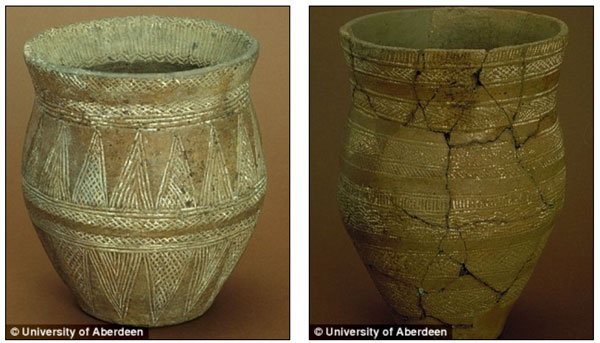
Unlike other places the Beaker People in this area built new monuments, stone circles, and a lot of them. Aberdeenshire has an unusual large number of stone circles – around 30. None to the scale of Stonehenge but still fascinating. (see The Stone Circle Trail (pdf) >).
‘Much to people’s surprise, these megalithic monuments were not Neolithic, but a younger and local development contemporary with the region’s Beaker burials,’ the authors said.
‘Elsewhere in Britain people spent great energy on building barrow mounds and funerary monuments, such as the Clava Cairns in the neighbouring Moray Firth region.
‘But in north-east Scotland, communities focused their collective and ceremonial attentions on recumbent stone circles.
‘Suddenly, there was an exciting new dimension to the puzzle of how and why north-east Scotland adopted new and international customs.’
So many new questions have been raised from this study; why were the Beaker burials in these areas of Scotland so popular and why so exclusive and separate from other traditions in this region? Why such a shorter time span? How did bronze come first to Scotland? Also why an apparently unique addition to their burial ceremony, animal or human ash on the beakers?
Examples of Beaker burials in Scotland include the case of ‘Ava’, the name given to a woman whose remains were discovered at Achavanich in Caithness in 1987 during road works. A young women between 18 and 22.
Artists reconstructed Ava:
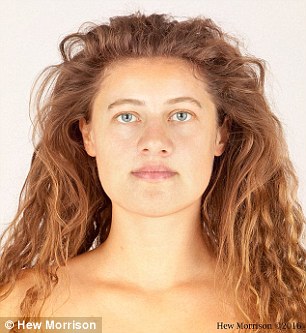

Loved this article. You never realise how much you need to learn or miss until you leave your homeland. We immigrated to Australia in Frbruary 1982 after Thatcher closed all our work places and ‘killed’ Scotland for us. Still miss home but luckily made a good life here. I thoroughly enjoyed reading this and would love to hear more. Was it human or animal bone dust used?
So interesting! I learned something new, which makes me feel happy. At almost 80 years I really enjoy it. I have read a lot about the stone circles but I did not know about the Aberdeenshire Beaker People. And “Ava” looks great! How can they create such a good looking lady with just the remains found in a grave? Thank you for this article.
Hi can you help trying to research beaker people human remains and urns that were found next to my home in the 1970’s by my grandfather. The remains used to be on display at Aberdeens Marcial college. The find was next to our house at Mason Lodge skene aberdeenshire however I can find no mention of the find anywhere and was wondering if this is something that you would have any information on or even just point me in the right direction. The ground next to us has been earmarked for property development however there seems to be no mention of this burial anywhere. Any help or advice would be greatly appreciated
Regards
M fraser
Hi Mike
Advice would be very welcome and of interest to many of our readers. Would it be possible to email me: amanda@scotclans.com.
Thanks
Amanda
Interesting article & something I knew nothing about. Thoroughly enjoyed it. Thanks Amanda.
Two years ago, the internet went gaga for a facial reconstruction of “Ava,” an early Bronze Age woman buried in the Scottish Highlands more than 4,000 years ago. Ava, an abbreviation of Achavanich, the area where she was originally discovered in 1987 in a rare rock-cut tomb in the county of Caithness, was originally presented with a mane of red waves and blue eyes. But Steven McKenzie at the BBC reports that the team behind Ava’s first coming out have issued a retraction of sorts in the form of an updated facial reconstruction—new DNA analysis shows that Ava had straight black hair, brown eyes and that her family were relatively recent migrants to Great Britain when she died.
https://www.smithsonianmag.com/smart-news/no-wait-real-ava-bronze-age-woman-scottish-highlands-180970950/